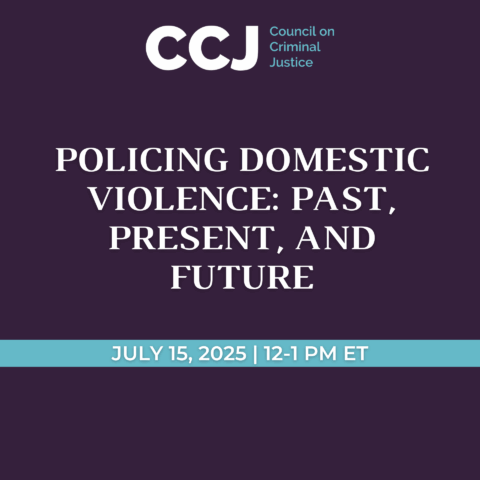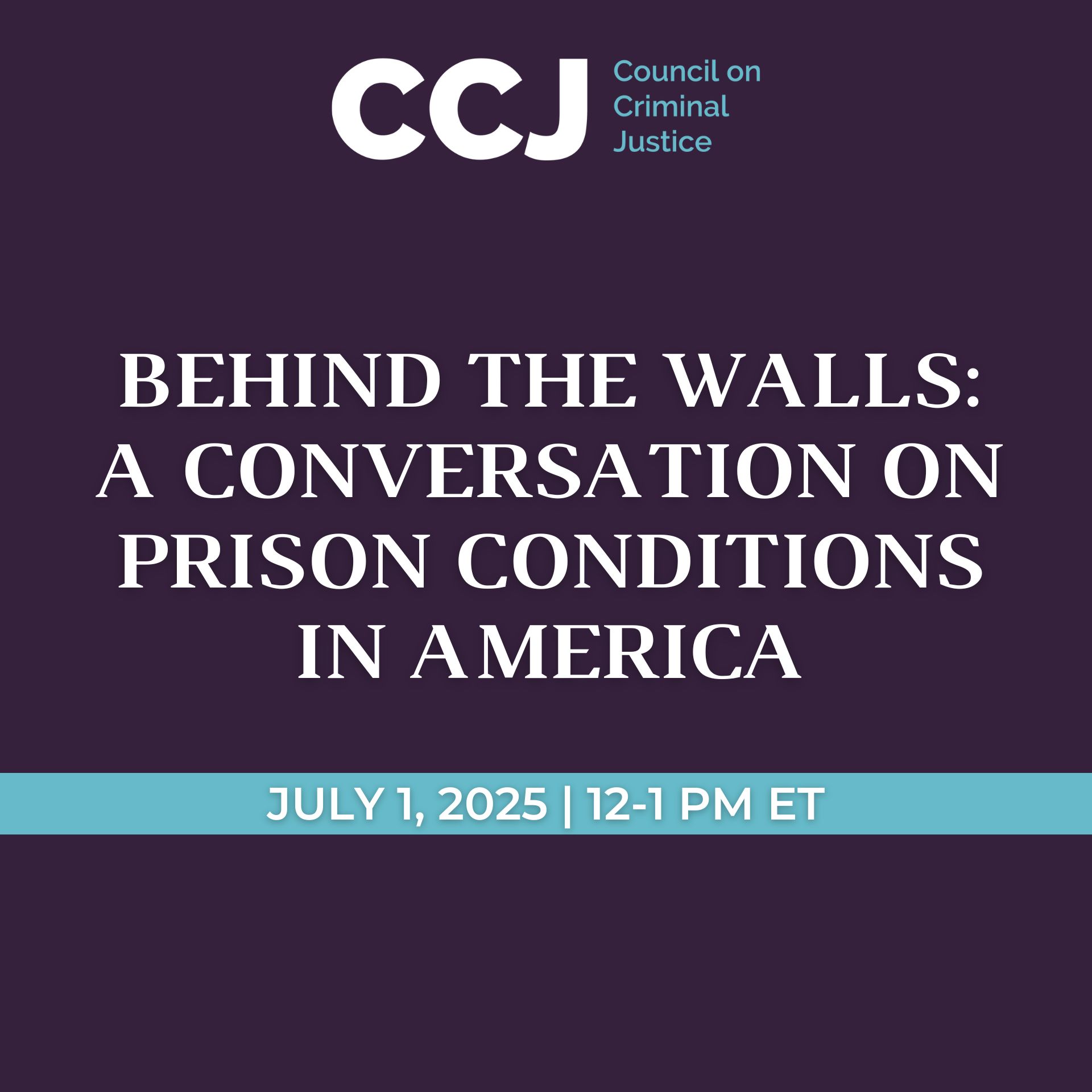Facing COVID-19, a series of Council on Criminal Justice web events, features leaders on the front lines of protecting public safety, public health, and justice as the criminal justice system responds to the coronavirus pandemic. Facing COVID-19: Public Safety in a Public Health Crisis took place on April 9, 2020.
Featured Speakers
Carmen Best – Chief, Seattle Police Department
Mayor Jane Castor – City of Tampa
Benjamin Tucker – First Deputy Commissioner of the New York City Police Department
Chuck Wexler – Executive Director, Police Executive Research Forum
Gil Kerlikowske (moderator) – Former Director of the White House Office of National Drug Control Policy and Chief of Police in Seattle and Buffalo
Summary
Police leaders at a Council on Criminal Justice (CCJ) web conference on COVID-19 agreed that community cooperation and personal responsibility, rather than the badge and gun, are key to containing the pandemic and helping the public stay safe – and said the coronavirus will forever change how officers do their jobs.
The panel of leaders, including Seattle Police Chief Carmen Best and First Deputy Commissioner Benjamin Tucker of the New York City Police Department, said it’s unrealistic to expect their officers to effectively enforce social distancing and stay-at-home orders given their limited numbers.
“We have 36,000 officers and 8.6 million people,” Tucker said, “so there’s no way you’re going to enforce your way out of this.”
Instead, Best added, police agencies need to emphasize public education and “social responsibility.” She said one helpful message in Seattle has been, “This could be your parent, your cousin, your neighbor who is at risk. So for their sake, stay indoors, stay at home.”
Relying on clergy to spread information, ensuring that officers model safe behavior, and using creative messaging – even chalk paintings on sidewalks – are among other tools the conference participants said they are using to fight the coronavirus emergency, a crisis that all described as uncharted territory.
“This is a unique crisis,” said Tampa Mayor Jane Castor, a former police chief. “In Florida, we’re usually hit by a hurricane and everyone comes to the rescue. But there is no cavalry here.”
The web-based event was held Thursday, April 9, and drew nearly 500 registrants from across the criminal justice field. In addition to Best, Tucker, and Castor, the conference included Chuck Wexler, executive director of the Police Executive Research Forum. The event was moderated by CCJ board member Gil Kerlikowske, the former police chief in Seattle and Buffalo and former director of the White House Office of National Drug Control Policy.
Key Takeaways
Reducing Arrests, Limiting Jail Populations
Police departments are working with the courts, county sheriffs, and other agencies to keep jail populations under control. Strategies include limiting arrests and the expedited release of people incarcerated for nonviolent crimes.
BEST: “We haven’t precluded making arrests – officers still have discretion – but we are asking them to be thoughtful about it. We’re really trying to focus on crimes that involve harm or danger or serious property damage before we make an arrest.”
CASTOR: “Early on in the crisis, our sheriff reduced the jail population by releasing some low-level inmates. We’re doing all that we can to avoid arrests that could be managed with a citation and sending someone home with a notice to appear, as opposed to bringing them into the courtroom.”
Protecting First Responders
Ensuring officers have personal protective equipment (PPE) is a top priority. Some agencies also are screening calls to determine whether those seeking help are infected with COVID-19, and tracking such callers on a “hot map.” People arrested may have their temperature taken. Hotels have been used to house officers who may be at risk of infecting family members – or who may be infected themselves. Rigorous sanitation routines are in place.
BEST: “With every call that comes into our 911 communications center, the dispatcher will ask three health-related questions before we send officers to that location. When it comes to the personal protective equipment, we are ensuring that officers have a gown to fully cover them if needed on those calls for service.”
TUCKER: “We’re trying to do as much as we can to make sure officers are getting the equipment they need, the information they need, to minimize the potential health impacts as they do their work. They are wearing PPE, they have the masks, they have the gloves and goggles. We have also created clean teams that are mobile and move around to various command locations where officers have tested positive.”
Domestic Violence Calls Rise
With stay-at-home orders elevating stress in many households, some agencies report an increase in domestic violence incidents.
BEST: “We’ve seen a 23% increase in domestic violence calls for service. We put out a public service announcement that talks about the fact that being at home isn’t always safe for every person, and we’ve included that information in our daily video message that we send to the troops. We also have domestic violence kits at each precinct so that every officer going to a call can make an appropriate referral and arrange transportation for those who need to get out of a potentially dangerous situation.”
New Roles for Law Enforcement
In some cities, the COVID-19 emergency is prompting police to take on additional duties, such as checking on senior citizens and assisting them with errands. Many police agencies, especially on the West Coast, also are assisting with efforts to move homeless people off the streets and into housing.
WEXLER: “In some cities, police are playing a new role, especially with the elderly, bringing them groceries and other essentials. This is a real opportunity for police departments to be creative and to look at the vulnerable populations, who are very afraid, and figure out how they can help.”
Prioritizing Officer Wellness
WEXLER: The mental health aspect of this is huge. Some chiefs have reported that the number of [officer] suicides has significantly increased. In New York, Governor [Andrew] Cuomo asked for psychologists to volunteer and help people who want someone to talk to, and something like 6,000 psychologists stepped up.
BEST: Employee wellness, which was already on the horizon with officer suicides, is going to another level. We are seeing extreme anxiety in people who have to come to work each day in the COVID-19 environment. So we have psychologists on board, we’re making sure that we’re reaching out to employees, and we have contracts with hotels so employees can stay there just to decompress if they need to, but also in case they don’t want to come into contact with a vulnerable family member, or if they themselves are sick.
Protecting the mental health of their force is a key challenge for police agencies. Many are relying on clergy to boost morale, and leaning on volunteers and partnerships with community organizations to address officer anxiety and other challenges.
Future Impacts on Policing
The pandemic has underscored the useful role technology can play in law enforcement, and after COVID-19, things are unlikely to return to how they once were. The use of video, for example, may forever reduce the need for officer involvement on certain types of calls.
BEST: “We’re being pushed into the 21st Century on technology, and we’re going to rely on it a lot more than we have before. Because we’re limiting calls for service, we realize there’s a lot more we can do online that doesn’t require an officer with a gun and a badge and pepper spray and all those tools to gather information. When there’s video evidence, for example, people can just take a video and send it to us. We’re going to become a lot more efficient because we’ve been pushed to be innovative.”
WEXLER: “Calls are being handled differently. In Toronto, they’re switching to one-officer vehicles, because it’s better protection for the officers, protecting them from each other. That’s the hard part of this story, that in cities like Detroit or New York, officers are infecting each other. How do you keep them working together but separate and safe? I think we’re seeing things that will change policing, and that’s a positive.”
TUCKER: “This has been a very fluid process, in terms of managing in this environment. There have been points along the way where we know, in capturing the data, that it will lead to changes in our permanent practices and policy as we go forward. We need to pay attention to that.”



